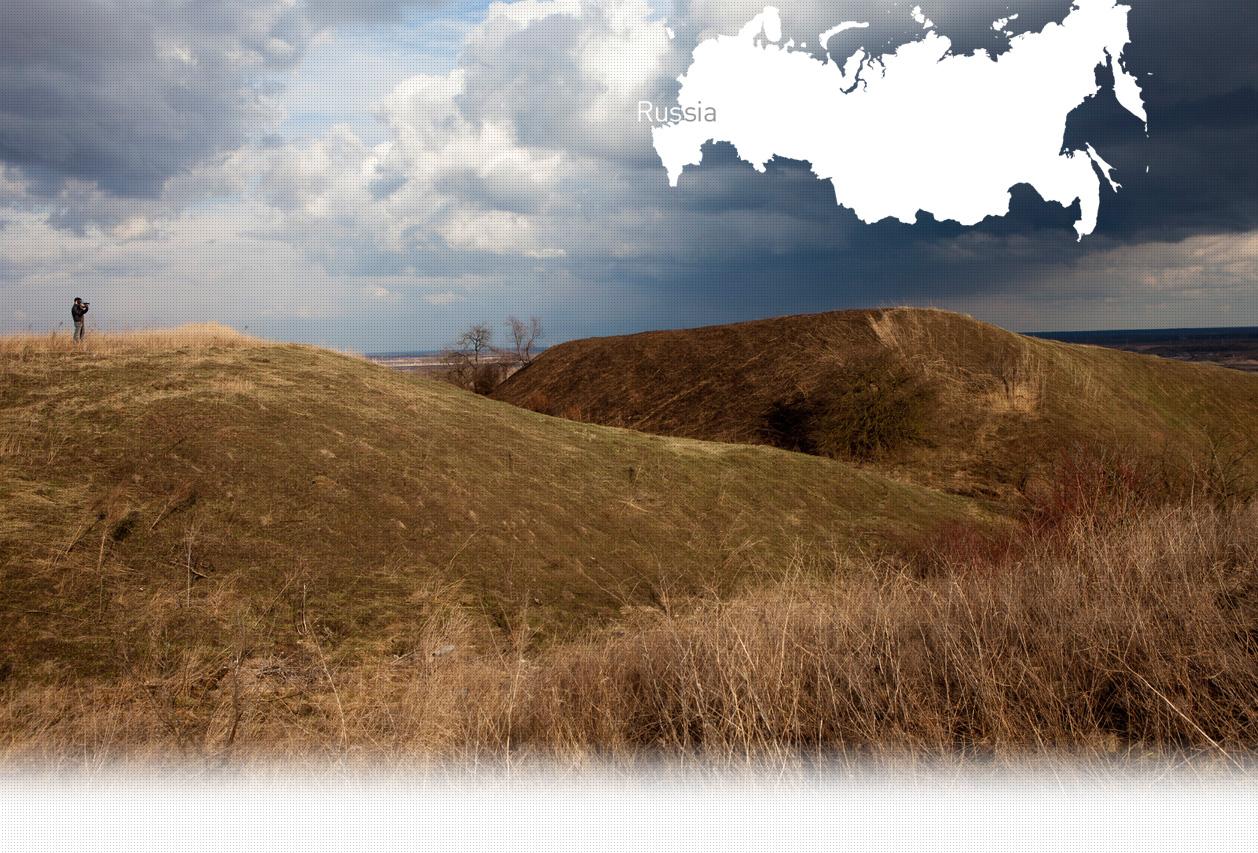

1 Killing site(s)
Tatyana L., born in 1929, recalled what happened to the Jews upon the Germans‘ arrival: “Once the Germans arrived, they forced all Jews to go register in what was called at that time, the Magistrate. From then on, they had to wear yellow or orange diamonds on their clothes to be distinguished from Russians. They could continue living in their houses and working. I would say that it was their only way to survive, as well as ours. Because if we had our shoes broken, the only place we could go is to see Benya the cobbler. People continued buying bread at the Jewish bakery. I want to say that there was not any organized Aktion against the Jews. The Poglar Jews were shot little by little in different places. “ (Witness n°500, interviewed in Pogar, on May 21, 2015)
“On November 22, 1941, a special SS unit arrived in Pogar and shot 217 Jews. Before being killed, the Jews were gathered in the yard of the magistrate building and were then transported in black trucks, covered with canvas, to the edge of the town. They were brutally exterminated and buried in two big clay pits close to the brick factory.” [Act of Soviet Extraordinary Commission, drawn up on October 4, 1945, RG-22.002M.7021- 85/4]
The town was occupied by German forces on August 24, 1941. On the eve of WWII, 276 Jews were living in the town. According to witness n°500, Tatiana L., who got along with the Jews, especially the children as they were classmates, the Jews living in Pogar were mostly clothing and shoe-makers as well as doctors. Some Jews owned bakeries or grocery shops. The town was occupied by Germans in the middle August 1941.
Yahad’s research revealed that shortly after the Germans’ arrival, all the Jews were registered and marked with yellow, distinguishing badges. There was no ghetto in the town of Pogar. The Jewish inmates were shot little by little during the different Aktions that were conducted throughout the first year of the occupation. The largest Aktion took place on November 22, 1942. There were also several areas where the prisoners of war were gathered. In total, during the German occupation, 771 people, including 217 Jews, were murdered in the Pogar district.
Do you have additional information regarding a village that you would like to share with Yahad ?
Please contact us at contact@yahadinunum.org
or by calling Yahad – In Unum at +33 (0) 1 53 20 13 17